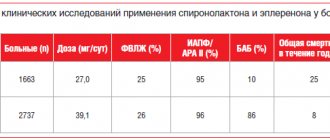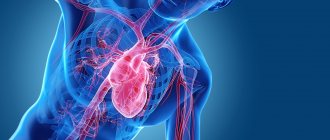Since ancient times, among folk recipes, the properties of some plants to treat people with edema and “weak hearts” have been known. Official medicine calls this condition heart failure. Modern scientific research has proven that the pathology is associated with a lack of energy capabilities of myocytes, the cells responsible for the contraction function, due to significant metabolic disorders.
Cardiac glycosides are a group of substances isolated from plants that are related in structure and mechanism of action. They are used to restore normal contractions during cardiac systole and create sufficient rest during diastole.
Emergency medications have been created in ampoule form for home use (drops and tablets). Medicines from the group of cardiac glycosides can be purchased in the pharmacy network only with a doctor's prescription, because they are potent, their prescription requires a deliberate decision and clear instructions for use.
Which plants contain glycosides?
In all climatic zones there are plants that have the properties of cardiac glycosides. In central Russia, May lily of the valley, spring adonis, various types of foxgloves, and jaundice grow. In warm countries, the shrubby harg, the Greek honeybee, has settled. Oleander grows quietly at home. Strophanthus is native to Africa. Previously, they were not treated with it, but were lubricated on arrow tips and used as an additional damaging factor in tribal wars.
Nowadays, special farms are engaged in the cultivation of medicinal plants. Artificial conditions are created for them. The level of nutrients in raw materials is controlled. Some drugs take their name from the original plant, others have lost this connection.
- Digitoxin is obtained from digitalis purpurea (Digitalis);
- from the subspecies of foxglove woolly - Celanid, Digoxin, Izolanid;
- the name of the bush harga (Gomphocarpus) is associated with drugs from it - Gomphocarpine, Gomphotin;
- Periplocin is produced from the polyvinicum (Periplocus);
- tropical Strophanthus serves as raw material for Strophanthin;
- from spring adonis (Adonis) - Adoniside;
- jaundice (Erisimum) became the basis of Erisimin;
- Korglykon, a tincture, is obtained from the May Lily of the Valley.
How do glycosides act on humans?
The mechanism of cardiotonic action is explained by the presence of two types of substances in the structure of glycosides:
- Ginin (aglycone) stimulates energy production in myocardial cells and plays the role of the main active agent.
- Glycon controls absorption processes, communication with proteins, and dissolution rate. Being an auxiliary agent, it determines the method of administration. It is on this that the absorption and removal from tissues, the possibility of accumulation (cumulative effect), penetration through the membranes of the brain and the toxic effect depend.
The stronger the bonds with proteins in the drug, the stronger the cumulative properties.
The physiological functions of the heart change under the influence of glycosides:
- the contraction period (systole) is shortened and the rest period (diastole) is extended;
- cardiac output increases;
- the speed of nerve impulse transmission through the myocardium’s own conduction system is inhibited - an undesirable property that contributes to the occurrence of blockades of various levels;
- heart rate decreases.
The effect on rhythm is explained:
- increased tone of the vagus nerve (slows down the rhythm);
- a change in the balance of electrolytes towards an increase in the concentration of calcium ions, a decrease in the concentration of potassium in the cells.
Are glycosides always beneficial?
There are cardiac glycosides from plants that contain a cyan group in their structure instead of an aglycone. They are classified as cyanogenic derivatives. Included in flax seeds, white beans, berry seeds (apricot, cherry, peach), and some grain crops (sargo).
There is an opinion about the benefits of seeds; we do not recommend testing it on yourself.
When combined with the enzyme systems of the body, a strong poison is formed - hydrocyanic acid. Its maximum content is in the kernels of bitter almonds. Therefore, it is allowed for an adult to eat a few seeds or add crushed almonds to confectionery in small quantities for taste. But in a child, consuming 5–10 nucleoli causes acute poisoning that is life-threatening.
These types of glycosides are not used in medicine. Their use in the food industry has strict restrictive standards.
Different approaches to drug classification
The classification of cardiac glycosides is based on the different properties of drugs, taking into account the mechanisms of action, methods of administration, and structure.
Preparations containing only one component include: Strophanthin, Digitoxin, Digoxin. There are medications that include a mixture of glycosides.
Based on the speed of onset of pharmacological action and its duration, 3 groups are distinguished:
- cardiac glycosides with a long-term effect (up to several days) with a maximum result after 10 hours, have the greatest ability to accumulate, more often cause an overdose, a representative is Digitoxin from Foxglove purpurea;
- with an average duration of action (detected in the blood for no more than three days), characterized by maximum effectiveness 6 hours after administration, onset of action 15–30 minutes after administration, the main representatives are obtained from Foxglove woolly, rusty and Adonis (Digoxin, Celanide);
- drugs with a quick and short period of medical assistance, used in the treatment of emergency conditions, are available in the equipment of the ambulance team, are not capable of accumulation, the route of administration is only intravenous, the result is visible “at the end of the needle” or after 5–10 minutes, every other day in there is no trace of them in the blood (glycosides from Strophanthus, Lily of the Valley - Korglykon, Strophanthin).
The drug is used for intravenous administration in acute heart failure
There is a classification based on polarity (ability to dissolve). All glycosides are divided into 3 groups:
- with good polarity - the composition of the drug has high solubility in aqueous media, but poor solubility in fats, is slowly and not completely absorbed in the intestine when taken orally, and is excreted by the kidneys (therefore Strophanthin and Corglicon are administered only intravenously);
- with average solubility - improved solubility in fats (Digoxin, Adoniside), but are recommended for oral administration on an empty stomach so as not to be bound by food proteins;
- lipophilic or fat-soluble (not polar) - perfectly absorbed from the intestine, binds to proteins, processed in the liver, has a long-lasting effect (Digitoxin), and is suitable for outpatient treatment.
How to build a glycoside therapy regimen
The main purpose of glycosides is the treatment of acute and chronic heart failure complicating heart disease.
Pathological changes in the patient lead to:
- increasing oxygen starvation (hypoxia), so tachycardia is clinically manifested;
- stagnation in the venous system, which is a consequence of impaired cardiac output;
- swelling in the feet and legs, shortness of breath, indicating a slowdown in blood flow in the peripheral vessels.
To obtain results from treatment with glycosides, the patient’s body must receive drugs in stages depending on the characteristics.
- Initial stage - in emergency situations, fast-acting glycosides are administered intravenously in an optimal dose. The doctor is guided by the onset of saturation by reducing tachycardia, shortness of breath, and moist rales in the lungs. But after a few hours their effect will end, the patient will need to be re-administered or switch to other drugs.
- Maintenance period - the total dose is reduced to prevent accumulation effects. The individual reaction of the patient, the simultaneous use of diuretics and antihypertensive drugs are taken into account. Specific indications and the general course of treatment are determined by the doctor taking into account the results obtained.
Palpitations, how to relieve them
Increased or slowed heart rate, as well as extrasystole, do not always indicate the formation of a pathological process. Perhaps there is an acute lack of oxygen for cardiac activity, the person feels panic, excitement, and stress. There may not be an urgent need to correct the functioning of the cardiovascular system with various drugs.
In more severe cases, treatment is prescribed:
- antiarrhythmic drugs;
- β-blockers;
- ARBs (angiotensin receptor blockers);
- surgery for implantation of a pacemaker is indicated.
When use is contraindicated
Absolute contraindications (use should be flatly avoided) for treatment with drugs from the group of cardiac glycosides are:
- increased individual sensitivity (allergy);
- detection of 2-3 degree atrioventricular block on the ECG;
- sinus bradycardia of any etiology;
- the appearance of symptoms of intoxication.
Relative contraindications may be associated with:
- the occurrence of extrasystole;
- manifestations of sick sinus syndrome;
- first degree atrioventricular block;
- acute stage of myocardial infarction;
- atrial fibrillation at a low rhythm frequency;
- renal failure;
- a decrease in potassium levels in the blood and an increase in calcium;
- pulmonary insufficiency.
Glycoside preparations are not used in the treatment of:
- aortic insufficiency;
- myocardial amyloidosis;
- thyrotoxic heart damage;
- with anemia;
- cardiomyopathies;
- adhesive pericarditis.
Clinical data
What you should pay attention to when poisoning with digitalis drugs:
- Consider your mental and conscious state.
- Carefully examine the condition of the heart.
- Look for signs of neurological disease.
- Measure serum digoxin levels, potassium, and other electrolytes.
- Electrocardiogram.
- Bradycardia.
- Multiple ventricular extrasystoles.
- Ventricular bigeminy.
- Paroxysmal atrial tachycardia.
- Ventricular tachycardia.
- Ventricular fibrillation.
Overdose and side effects
An overdose of a drug looks like poisoning with cardiac glycosides. It is possible with a single dose and long-term uncontrolled use due to the cumulative effect.
In cases of intoxication, medications containing potassium and magnesium are prescribed (Panangin, Asparkam)
Typical signs:
- nausea, vomiting, abdominal pain, diarrhea;
- rhythm changes (severe tachycardia or blockade up to complete);
- negative dynamics on the ECG.
If these signs appear, treatment with glycosides is canceled.
Intoxication with cardiac glycosides causes side effects in therapy:
- headache;
- arrhythmia;
- loss of appetite;
- insomnia;
- tendency to bleeding (nasal);
- change in color perception in vision (a yellowish tint is added everywhere);
- Hallucinations rarely occur and consciousness is impaired.
Manifestations such as gynecomastia in men and acute intestinal necrosis have been described.
The heart is pressing - pills that help
Pressing pain behind the sternum is relieved with tablets from the nitrate group of drugs (Nitroglycerin). In accordance with the generally accepted classification of cardiac drugs, you can choose different cardiac drugs as prescribed by your doctor.
For this purpose, the patient needs to call an ambulance. Before the doctor arrives, you can take 1 tablet with an interval of 5 minutes:
- Nitroglycerin under the tongue, sublingually;
- Aspirin Cardio tablet crushed into powder inside, orally;
- Or analogues of this drug - Acetylcardio-Lect, Thrombopol, Aspicard, Trombogard, Aspinat, CardiAsk and others.
Further treatment will be prescribed by a cardiologist after a comprehensive examination of the patient. Complaints include pressing pain in the heart area, radiating to the left arm and little finger, lack of oxygen, convulsions, nausea, panic and fainting.
Causes of intoxication
All cardiac glycosides are registered in pharmacies according to “List A” along with toxic substances. Poisonous properties begin to appear when the total therapeutic dosage reaches 60%.
Most often, cases of poisoning are associated with incomplete knowledge of patients about the danger and the desire to enhance the therapeutic effect.
Poisoning of children occurs due to poor control over the storage of drugs
Signs of intoxication are similar to an overdose. For older people, changes in brain function are more typical:
- weakness;
- dizziness;
- apathy turning into an attack of excitement;
- various psychotic disorders.
The digestive organs react: abdominal pain, vomiting, aversion to food.
For children, manifestations of arrhythmia are more typical.
What to take if you have severe heart pain
The patient's complaints also include shortness of breath, lack of oxygen, dizziness, weakness, and cold sweat. Increased temperature and fever may also appear. Severe pain in the heart may indicate the development of:
- myocardial infarction;
- aortic pathologies;
- myocarditis;
- thromboembolism;
- pericarditis;
- endocarditis;
- other pathologies.
Pulmonary hypertension is characterized by increased pressure in the pulmonary artery, which is complicated by severe heart failure, which can be fatal. According to the classification of PH, there are 5 types: arterial, venous, thromboembolic, hypoxic and mixed type.
The patient needs to be kept calm and urgently call an ambulance. If you have severe pain in the heart that lasts more than 5 minutes, you cannot relieve it on your own; in this case, you need a doctor.








